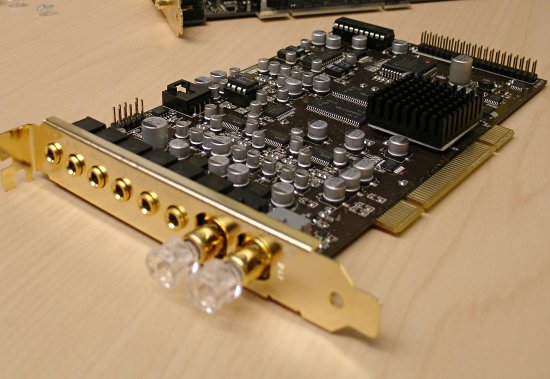- Sep 28, 2001
- 8,464
- 155
- 106
I got myself a Asus Z87-Pro board which comes with all sorts of stuff I don't even need including wireless, bluetooth and whatnot. The Z87-Pro certainly is not a "cheap" board by any means.
It has a built-in RealTek ALC 1150 sound solution and according to reviews the board has "one of the better onboard sound implementations out there".
While for playback I think the onboard is "ok" I was disappointed because of the extremely poor microphone input. (As opposed to dedicated Creative etc. cards, those onboard solutions lack a mic amp or they have them but they are extremely noisy. For me this is important since I use speech recognition with a dynamic microphone which requires decent input levels and low noise when a mic is plugged in for accuracy).
What really angered me is the fact that an ancient PCI Audigy 2 would be entirely sufficient and it worked beautifully with my older board. Except that on this new board there is no PCI slots anymore so I cannot use the Audigy 2 any longer). Because of the poor mic input and overall "meh-ness" of the built-in Realtek I now got myself a PCIE Soundblaster Z which I hope will have better sound and especially a better mic input.
I am ***ed since I don't understand why in 2014/2015 when people buy "better motherboards" they still have half-assed sound solutions with poor components, DACs and ADCs etc.
I think it's ridiculous we STILL require dedicated sound cards these days. ALL what dedicated sound-cards are is usually single-chip processors anyway with some added circuitry. What's the problem? Why does onboard sound still suck?
It has a built-in RealTek ALC 1150 sound solution and according to reviews the board has "one of the better onboard sound implementations out there".
While for playback I think the onboard is "ok" I was disappointed because of the extremely poor microphone input. (As opposed to dedicated Creative etc. cards, those onboard solutions lack a mic amp or they have them but they are extremely noisy. For me this is important since I use speech recognition with a dynamic microphone which requires decent input levels and low noise when a mic is plugged in for accuracy).
What really angered me is the fact that an ancient PCI Audigy 2 would be entirely sufficient and it worked beautifully with my older board. Except that on this new board there is no PCI slots anymore so I cannot use the Audigy 2 any longer). Because of the poor mic input and overall "meh-ness" of the built-in Realtek I now got myself a PCIE Soundblaster Z which I hope will have better sound and especially a better mic input.
I am ***ed since I don't understand why in 2014/2015 when people buy "better motherboards" they still have half-assed sound solutions with poor components, DACs and ADCs etc.
I think it's ridiculous we STILL require dedicated sound cards these days. ALL what dedicated sound-cards are is usually single-chip processors anyway with some added circuitry. What's the problem? Why does onboard sound still suck?







 Yeah I know, it's just charts right.
Yeah I know, it's just charts right.
